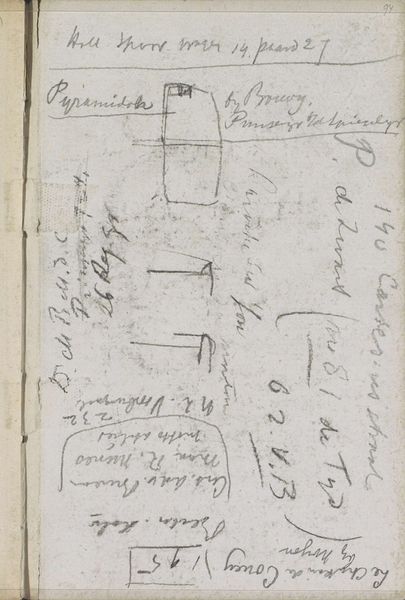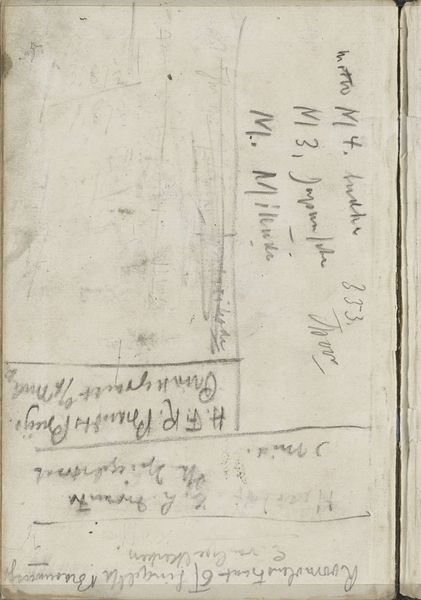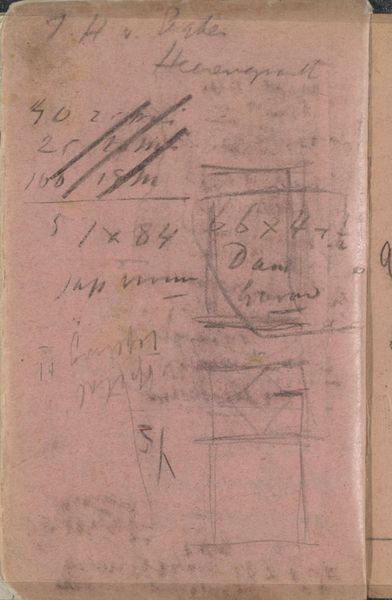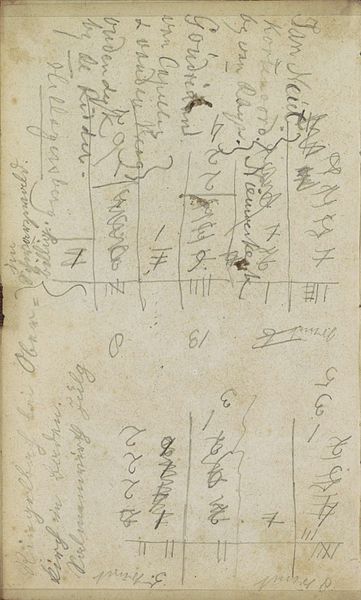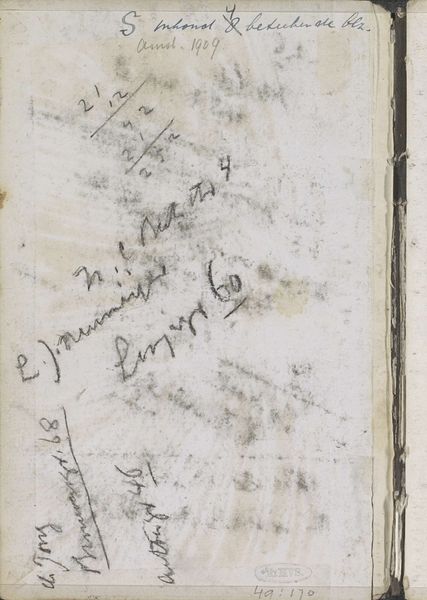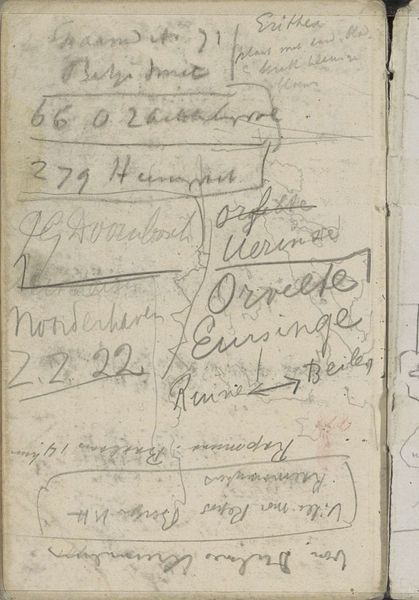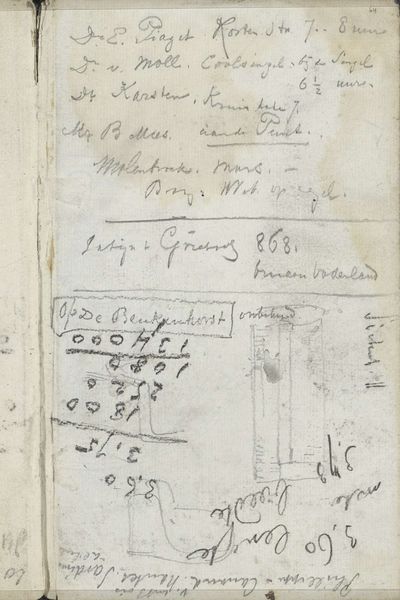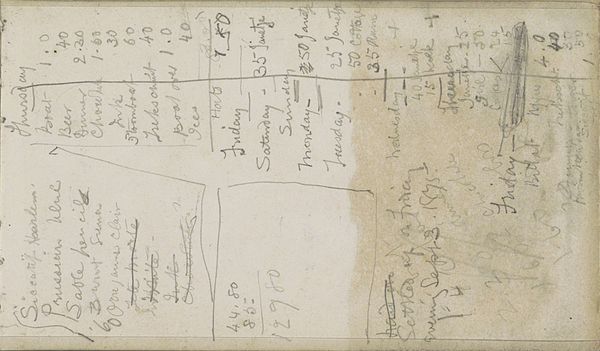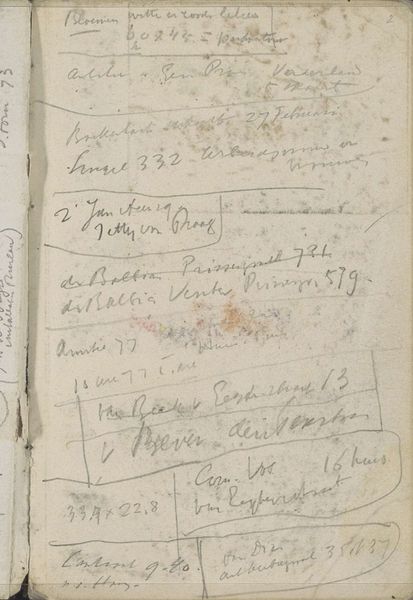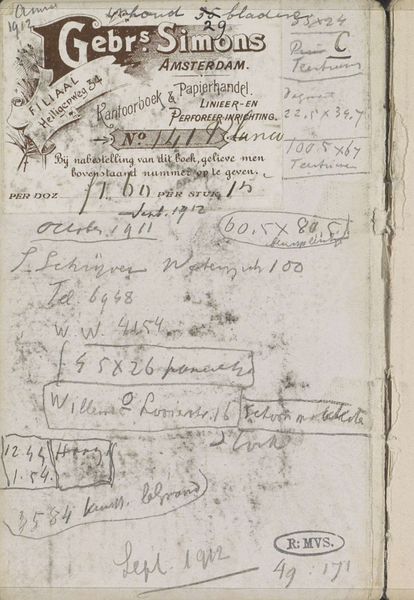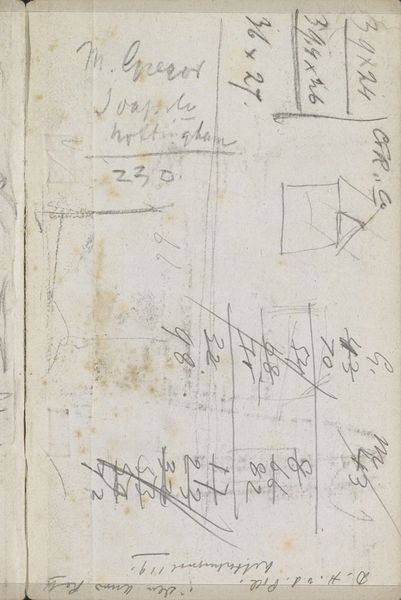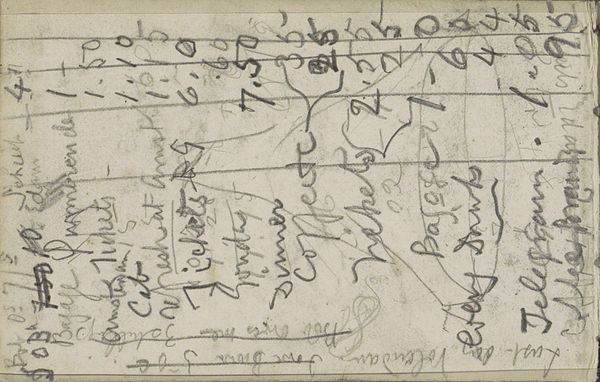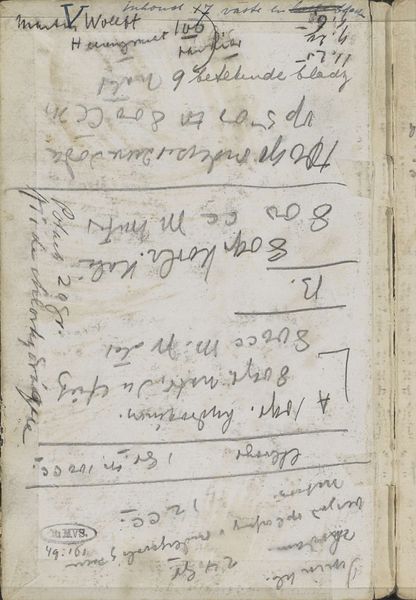
drawing, paper, pencil, graphite
#
drawing
#
impressionism
#
landscape
#
paper
#
pencil
#
graphite
Copyright: Rijks Museum: Open Domain
Curator: Here we have George Hendrik Breitner's "Studies," dating from around 1884 to 1886. It’s a drawing in graphite and pencil on paper, currently held in the Rijksmuseum. Editor: It gives the immediate impression of frenetic energy—a kind of organized chaos. The overlaid grids and notations make me think of an architect's or surveyor's notebook. What stands out for you? Curator: Precisely, the layered composition. We see lines dividing the space, overlaid with seemingly random figures and text. The lack of a clear focal point pushes us to consider the whole, the act of note-taking and preliminary planning itself as the subject. There’s a fascinating tension between the planned structure of the grids and the freedom of the sketches and text. Editor: Those figures, almost like rudimentary charts, are particularly interesting. They resonate with symbolic measurements, attempting to quantify or understand a space, or perhaps even something more abstract. And the scattered text... they hint at capturing the immediate, the everyday ephemera, which contributes to that sensation of a working document. Curator: Indeed, Breitner isn't aiming for mimetic representation. He's using line and notation to construct something beyond the immediately visible. We can sense the artist capturing a series of moments, thoughts, perhaps impressions of a space undergoing transformation. The overlaid quality points to simultaneity and fluidity. Editor: It strikes me as intensely personal—an intimate record of observation and thought processes. Breitner is seemingly trying to impose order, represented through geometric grids, upon things inherently fluid and changing, as emphasized by landscape scenes, impressions or perhaps street encounters noted alongside those structured spaces. Curator: The contrast of freedom and form lends a very dynamic feel, wouldn't you agree? It certainly resonates deeply within the tradition of impressionistic renderings. It also serves as a powerful visualization of cognitive processes—the jumble of thoughts before they're refined. Editor: Definitely. It reminds us of the constant dialogue we have between imposed systems and individual impressions, the universal impulse to organize and find meaning in a world always on the move. It transforms the everyday into an archive. Curator: A truly revealing look into the artist’s creative mind and artistic praxis, providing a window to better understand what can lie beneath the surface when he composes his oil on canvas work. Editor: And the visual legacy is its emphasis on embracing our intuitive and imperfect means for grappling with a world of experiences.
Comments
No comments
Be the first to comment and join the conversation on the ultimate creative platform.
